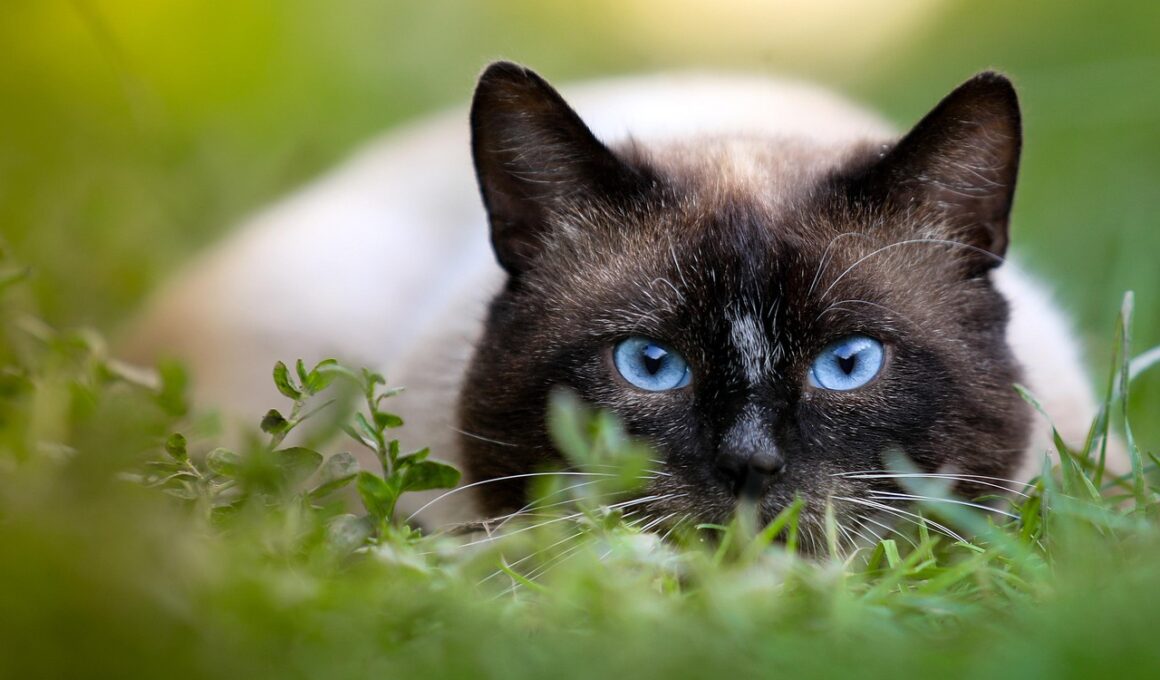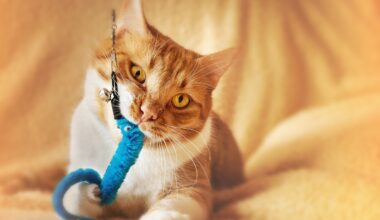How to Create a Cat-Friendly Indoor Environment to Prevent Problematic Hunting
Cats are natural hunters, and this instinct can lead to problematic hunting behaviors when they are kept indoors. To create a cat-friendly indoor environment, it is essential to provide ample stimulation and opportunities for physical activity. One effective way to do this is by incorporating various toys and climbing structures. Interactive toys that mimic prey, such as feather wands or laser pointers, can engage your cat’s hunting instincts, providing entertainment and mental workout. Additionally, consider adding multi-level cat trees that encourage climbing and jumping. These activities promote exercise, reducing the likelihood of your cat developing unwanted habits. Rotating toys regularly keeps your cat’s interest levels high, preventing boredom and, therefore, problematic behaviors. Apart from physical stimulation, try to create a safe haven with cozy spots for your feline friend to rest and reflect. Proper enrichment counters hunting urges and provides a more balanced indoor lifestyle for your cat. The ultimate goal is to address and fulfill their hunting instincts constructively, ensuring a harmonious household where both cats and humans coexist happily.
Understanding your cat’s natural instincts is key in creating an environment that minimizes problematic hunting behaviors. Cats are wired to stalk and pounce on prey, and when these instincts are suppressed, they can express those behaviors in disruptive ways. By recognizing this, you can adjust your home accordingly. One approach involves implementing more vertical spaces, like cat shelves, to encourage climbing and exploration. This stimulates your kitty’s natural curiosity and hunting instincts in a safe manner. Consider also incorporating bird feeders outside your windows, which can provide endless entertainment as your cat watches potential prey activity. By creating play zones with structured activities, you allow your cat to exercise its instincts to hunt without resorting to disruptive behaviors. Additionally, investing in puzzle feeders can turn mealtime into a stimulating hunt, further refining their natural skills. It’s essential to create a balanced environment where hunting can be displayed through play and observation rather than through misguided behaviors. An enriching indoor area can result in a calmer state of mind, limiting the urge for problematic hunting and helping maintain peace within your living space.
Engaging Toys and Activities
Choosing the right toys for your cat is crucial in addressing and preventing problematic hunting behavior. Opt for toys that mimic the movements of prey, such as stuffed mice or balls that move unpredictably. These types of toys incite instincts and make playtime more exciting for cats. You can also make DIY toys at home using common household materials, such as cardboard boxes or crumpled paper. Encouraging your cat to explore these novel textures can help reduce their desire to hunt and engage with their environment positively. Moreover, provide ample opportunity for solo play and direct interaction. Scheduled play sessions with your cat not only bond you two but also fulfill their need to hunt. Vary the type of engagement—like climbing exercises, games of hide and seek, or interactive play. Don’t forget about scratchers—while they might not seem directly related to hunting behavior, they stress the importance of physical and mental outlets. Allowing your cat to engage physically and mentally can lead to a happier and more relaxed companion, reducing the likelihood of unwanted hunting activities.
Indoor cats need various forms of environmental enrichment that cater to their natural instincts. One effective method is to design a space with different textures, heights, and hiding spots. You can use furniture, shelves, and storage boxes creatively, ensuring your cat has areas to explore and hide. Arranging these items encourages climbing, jumping, and hiding, all of which contribute to a fulfilling and stimulating environment. Moreover, rotating these items periodically can keep the atmosphere fresh and exciting. Supplement your home with scents they enjoy; catnip and herbs can engage their sense of smell. Consider implementing scent-based games, where you hide treats under boxes or blankets and let your cats sniff them out. This mimics their natural hunting patterns while promoting mental stimulation and focus, giving your feline a task to conquer. Physical activity, combined with scent-focused games, allows your cat to remain mentally sharp and engaged, preventing disruptive behaviors stemming from boredom. Such modifications to the environment are vital in promoting an indoor space that nurtures rather than stifles your cat’s instincts.
The Role of Routine in Behavior Management
Establishing a consistent routine for feeding and playtime can significantly help in preventing problematic hunting behaviors. Cats thrive on routine as it provides them with predictability, which can reduce anxiety and impulsive behaviors. Set specific times for meals, ensuring your cat learns to anticipate when food will arrive. This predictability encourages them to engage in activities you deem appropriate rather than expressing frustration. Similarly, establish a playtime schedule that includes intense play sessions followed by quiet rest periods. Use these sessions as an opportunity to vary play types, alternating between interactive sessions and solo play using toys. This balance allows your cat to socialize with you while also learning to entertain itself with their toys. Sticking to this routine can dull the urge for unwanted hunting practices and instead foster a stable, calm environment. Remember that each cat is different, and it may take time to find the right balance. Observing your cat’s preferences and adapting accordingly will ensure a harmonious relationship and mitigate adverse behaviors associated with their hunting instincts.
Creating an intricate and stimulating environment doesn’t need to be overly complicated. You can incorporate everyday materials into your cat’s play regimen. For instance, you can transform paper bags into interactive play spaces by cutting holes for your cat’s exploration or throwing in some treats for an enticing challenge. Cardboard boxes can also become fortresses or climbing structures. Along with introducing various toys, ensure that there are multiple access points to these play areas. This accessibility will encourage your cat to engage and play more frequently. Another simple twist is to add tunnels or boxes to imitate the hunting experience. Cats instinctively want to explore confined areas, heightening their thrill for hunting behavior without resorting to problematic activities. You can even take it a step further with window perches that give your cat a bird’s-eye view of the outdoors. This visual stimulation allows them to satisfy their instincts by observing wildlife such as birds or squirrels safely from inside. Creating such environments needs creativity, ensuring ample engagement for your cat without promoting adverse hunting behavior.
Monitoring Your Cat’s Emotional State
An essential aspect of preventing problematic hunting behaviors is closely monitoring your cat’s psychological welfare. Cats can experience stress when confined indoors, potentially leading to aggressive or obsessive hunting behaviors. Keep an eye out for signs of stress, ranging from excessive grooming to hiding or displaying aggression. When you notice such behaviors, reassess your living conditions to ascertain if they fulfill your cat’s instinctive needs. Providing a safe space where your cat can retreat is vital for emotional comfort. You may also consider using calming products, like pheromone diffusers, which have been effective in reducing feline anxiety levels. Allowing your cat to form secure attachments to their environment will help manage their stress responses. Incorporating more interactive sessions can foster a deeper bond between you and your pet, enhancing their sense of security. Keeping communication open with your veterinarian allows you to explore additional solutions tailored to your cat’s unique needs. Keeping mental well-being at the forefront of your care routine ensures not only a healthier cat but also a reduction in troublesome hunting behaviors.


